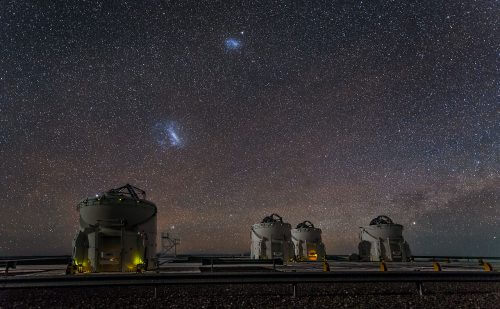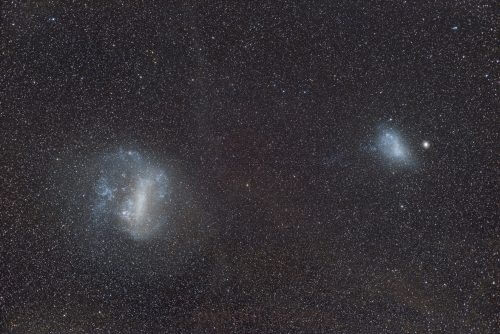New research describes how another luminous galaxy was engulfed by the Large Magellanic Cloud about three to five billion years ago

Two of the galaxies closest to the Milky Way - the Large Magellanic Cloud and the Small Magellanic Cloud - could have a third companion. New research describes how another luminous galaxy was engulfed by the Large Magellanic Cloud about three to five billion years ago.
Benjamin Armstrong, a doctoral student at the International Center for Radio Astronomy Research (ICRAR), said that most of the stars in the Large Magellanic Cloud orbit the center of the galaxy in a clockwise direction but, unusually, a few stars orbit it in the opposite direction - counterclockwise.
"For some time, the explanation was that these stars came from the companion galaxy - the Small Magellanic Cloud," Armstrong said, "We estimate that they originated from a merger with another galaxy in the past."
Armstrong, from the University of Western Australia, created a computer model to simulate galaxy mergers.
"What we discovered is that in this merger event a strong counter-rotation is obtained. This is consistent with what we see when we actually come to examine the galaxies."
Plenty of new star creation
The Magellanic Clouds can be seen in the night sky with the naked eye in the Southern Hemisphere sky.
They have been observed by ancient civilizations for thousands of years. They were discovered to Europeans during the voyage of Ferdinand Magellan, who circumnavigated the world from 1519 until his death in battle in the Philippines two years later. On the way he went farther south - more than any other span before him. In fact, he reached almost the southernmost point in South America - and discovered the Egypts that separate it from the Land of Fire, which are still called by his name, Egypt of Magellan.
These are the closest galaxies to the Milky Way. The Large Magellanic Cloud is 160 light years away from us and the Small Magellanic Cloud is 200 light years away.
According to Armstrong, the finding could help explain a problem that has troubled astronomers for years - why stars in the Large Magellanic Cloud are usually very old or very young. "In galaxies, there are areas called star clusters," he said. "Star clusters contain many stars close to each other in age that probably formed in similar environments. For the Milky Way, the star clusters all contain very old stars. In the Large Magellanic Cloud, in addition to older clusters, there are also very young clusters, but almost no middle-aged clusters. This phenomenon is known as the 'age gap' problem," said Armstrong.
"Since in the Large Magellanic Cloud we see an abundance of new star formation, this may indicate a merger of galaxies." He said the findings could also explain why the Large Magellanic Cloud appears to have a thick disk.
"It's a new way of looking at an old problem," he says.

To the notice of the International Institute for Radio Astronomy Research (ICRAR)
More of the topic in Hayadan:
